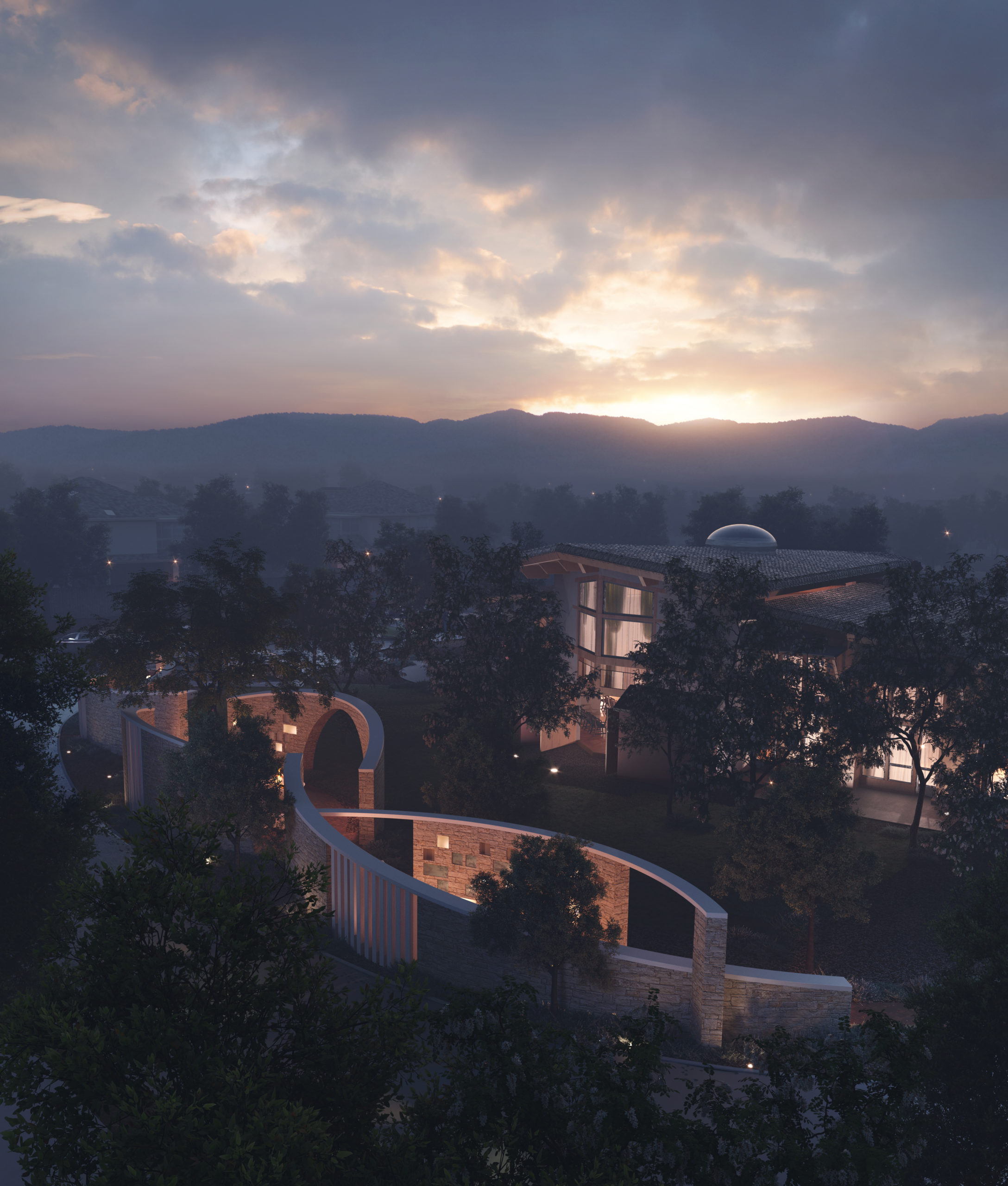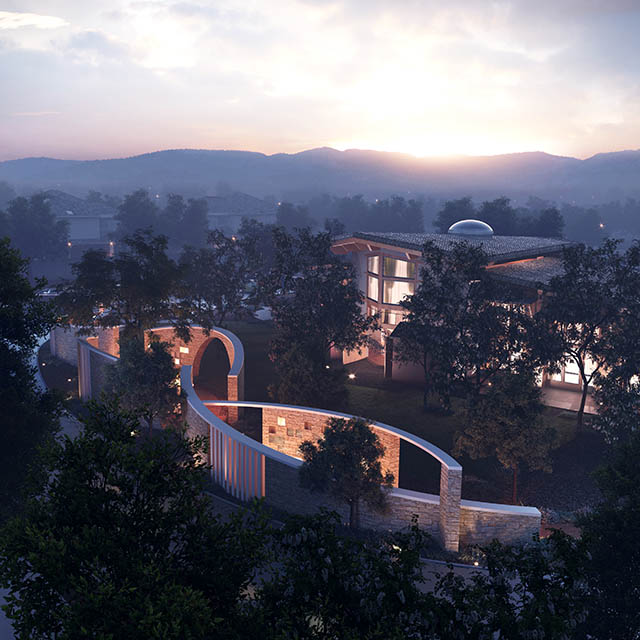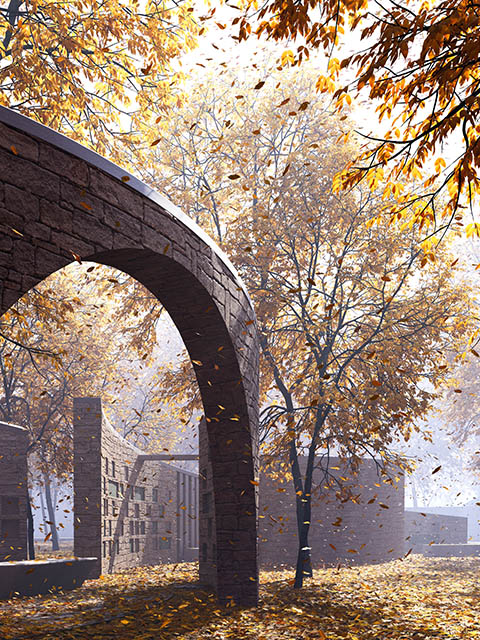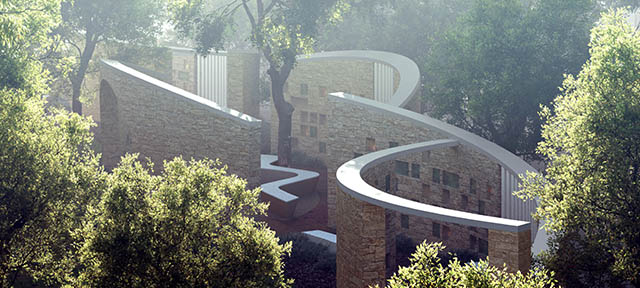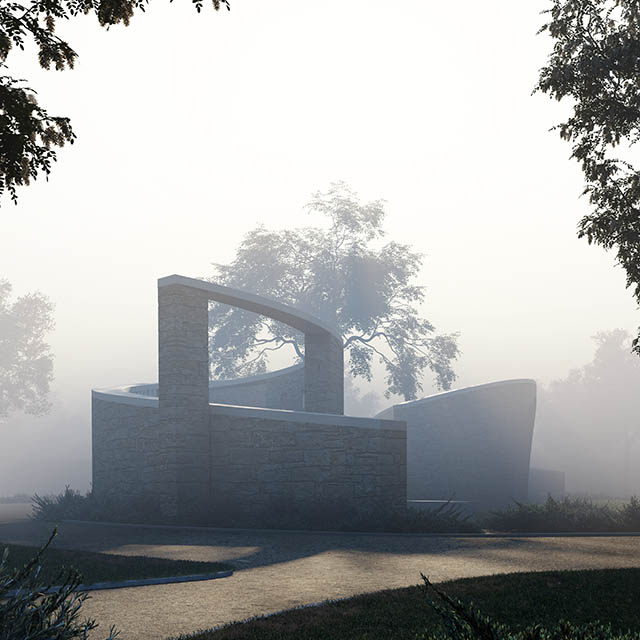UNBUILT WORK AWARD
John Marx, AIA, Form4 Architecture
Aptos, California
This columbarium in a seaside community occupies the drought-tolerant gardens of an Episcopal church. A choreographed sequence of open-air stone pavilions, the columbarium reads like a meeting of intertwining outdoor rooms. The weight and sense of permanence offered by its high stone walls contrast with the lightness and ever-changing seasonality of the surrounding landscape framed by picturesque apertures punctuating the walls.
The interlaced form of the architecture alludes to the endless number of different journeys taken through life by individuals who nevertheless belong to a connected humankind.
Also symbolized is the transition between birth and death and how this is inevitably a return to nature. Each wall points to the next, emphasizing the sense of transition through movement. Passage is counterbalanced by a strong desire to create a building that, while suggesting movement, is also eternal and fixed.
Six arced segments exist independently while each is interrelated to the others. They can be read as two sinusoidal curves intersecting to create almond-shaped outdoor areas, as well as a labyrinth of stone walls creating a path of discoveries. Hundreds of urns are located here according to a random pattern conferring additional resonance to the texture emerging from the sunlight gracing its ragged stone surfaces.
Jury Comments
Columbaria are usually very static compositions. This project uses curved geometry in a columbarium that is anything but orthogonal. It offers a journey to explore, lending an organic quality to its sense of place. The architecture sensitively responds to the rolling nature of the location. It is very poetic.
Project Team Members
Paul Ferro, Partner in Charge and CEO, Form4 Architecture
John Marx, AIA, Project Designer and Chief Artistic Officer, Form4 Architecture
Cullen Taub, Project Architect, Form4 Architecture
Saba Raji, Design Team, Form4 Architecture
Renderings by Form4 Architecture / Downtown

